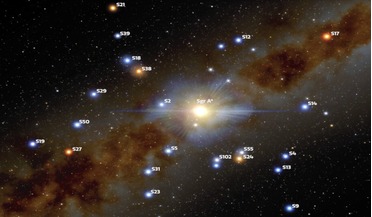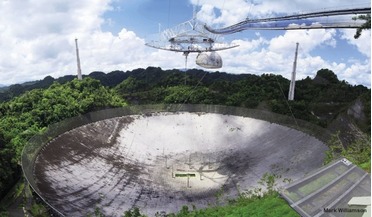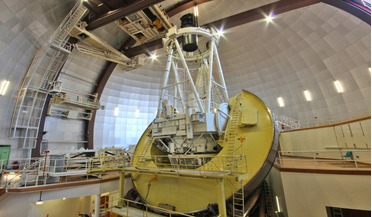 17 December 2021
New study shows that 99.9% of the mass at the centre of our galaxy is due to black hole
17 December 2021
New study shows that 99.9% of the mass at the centre of our galaxy is due to black hole
... theory of gravity in this extreme laboratory, and is there anything else hidden at the centre of the Milky Way. “The most straightforward way to answer that question is to closely follow the orbits of stars passing close to Sgr A*,” says Stefan...
 March 2021
Messier 82’s starburst magnetic highway
March 2021
Messier 82’s starburst magnetic highway
... about 100 times more luminous than the centre of our own Milky Way galaxy. Stars are forming at an exceptionally high rate, burning... The geometry of the field in a normal galaxy like our Milky Way is parallel to the plane, but the HAWC+ results show ...
 July 2021
Arecibo - an astounding legacy
July 2021
Arecibo - an astounding legacy
... as high as 2 GHz. This meant that the 21 cm line of neutral hydrogen, which dominates the interstellar medium of the Milky Way as well as distant galaxies, could now be observed at Arecibo. The upgrade also included the addition of the S-band...
 16 November 2015
Largest, most detailed image of space created by German astronomers.
16 November 2015
Largest, most detailed image of space created by German astronomers.
...by far the most detailed astronomical image of the Milky Way galaxy. The incredible results of their work are now... by using a powerful zoom to showcase various parts of the Milky Way. At an unprecedented 46 billion pixels, the image was composed ...
 18 April 2018
Ambitious Galactic survey to help find Sun's lost family
18 April 2018
Ambitious Galactic survey to help find Sun's lost family
... ‘fingerprints’ of more than 340,000 stars in the Milky Way, which should, amongst other things help identify where the stars... satellite that has mapped more than 1.6 billion stars in the Milky Way. Together the two will be able to show not just the...
 19 February 2020
Molecular oxygen detected for the first time in another galaxy
19 February 2020
Molecular oxygen detected for the first time in another galaxy
...astronomers have for the first time detected molecular oxygen beyond the Milky Way and it has turned up in the outflows of gas ...cloud – and never before has it been seen outside the Milky Way. One current theory as to why there is so little available...